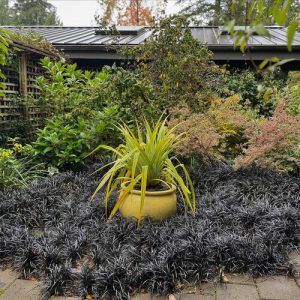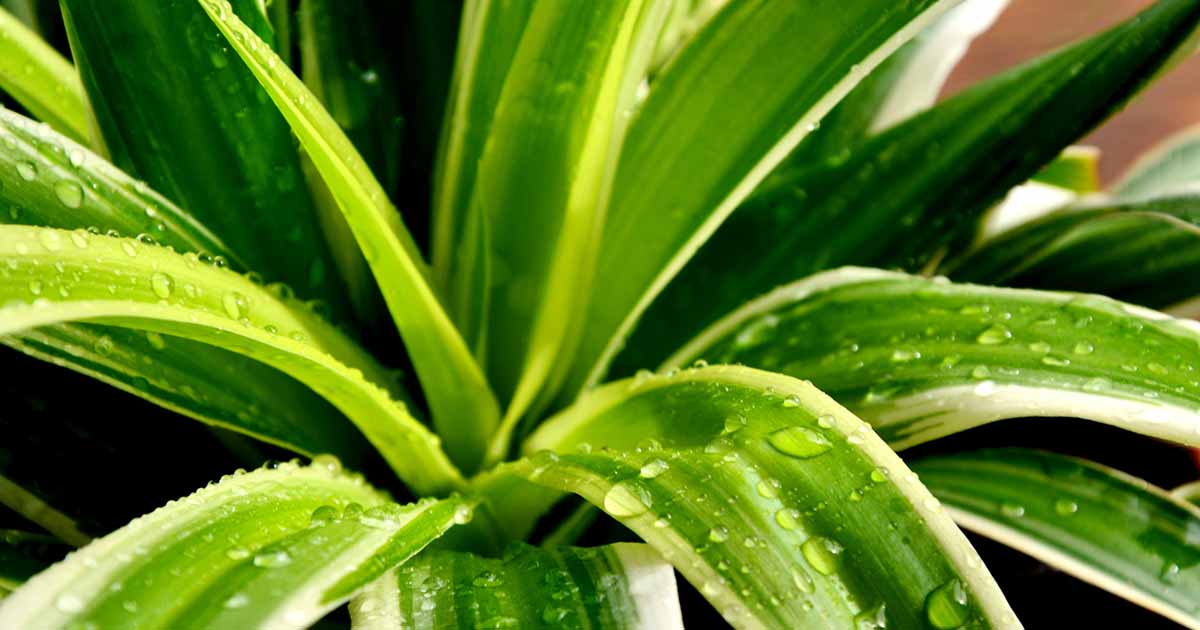
There’s a fine line between choosing a houseplant that thrives on neglect and not giving that plant any support at all.
Spider plants, aka spider ivy, Chlorophytum comosum, are particularly easy-care, from their light and temperature needs to their ability to get by without much water on occasion.
But you don’t want to push their tolerant nature to the point where they struggle to grow, look tattered, or stop producing those appealing plantlets.
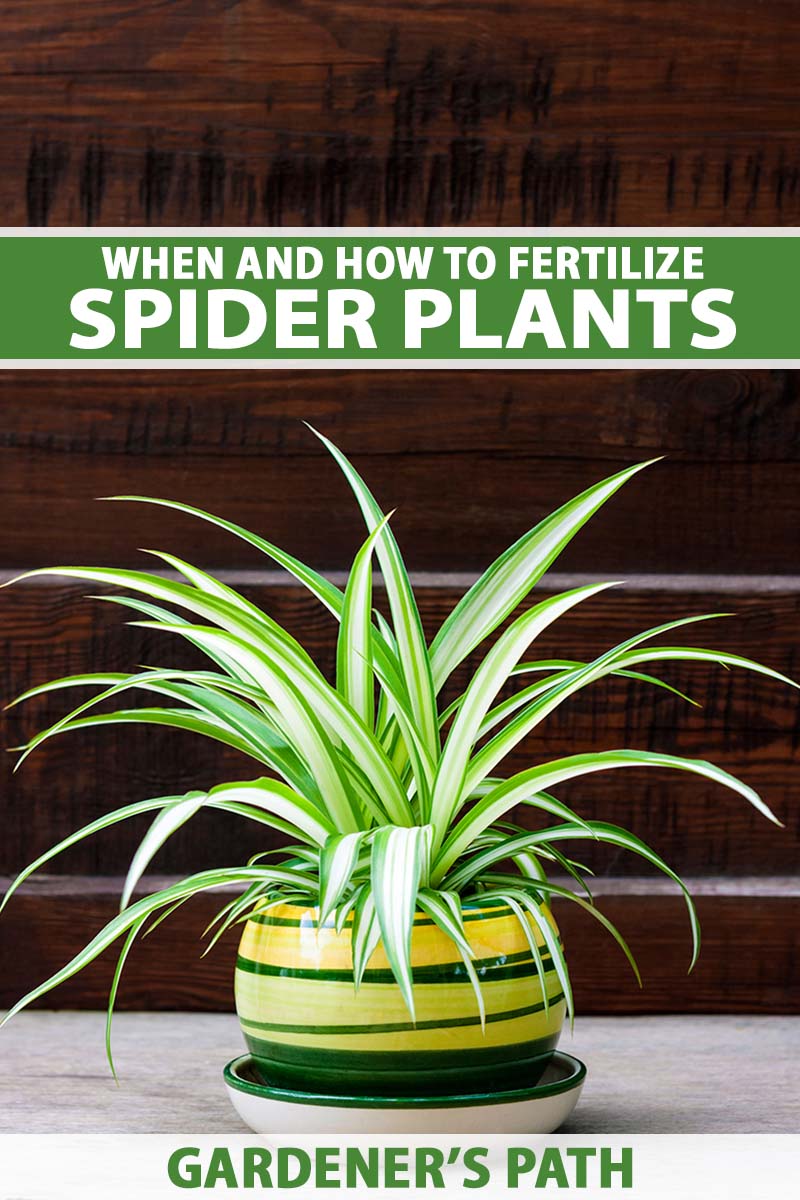
We link to vendors to help you find relevant products. If you buy from one of our links, we may earn a commission.
If you are new to growing spider plants, check out our guide to learn more. Feeding C. comosum is one of the ways you can boost their health.
But it’s important to choose a proper fertilizer and also to only apply it when it will help, not harm, the houseplant.
In this guide, I’ll share why you might want to offer your spider plants extra food, and also give you fair warning about the ways improper fertilizing can do more harm than good.
Here are the topics I’ll cover:
Do Spider Plants Need Fertilizer?
Heads-up, houseplant lovers who tend to overwater and then bemoan the death of your plants.
Spider plants not respond well to excessive fertilizer any more than they do to oversaturated soil.
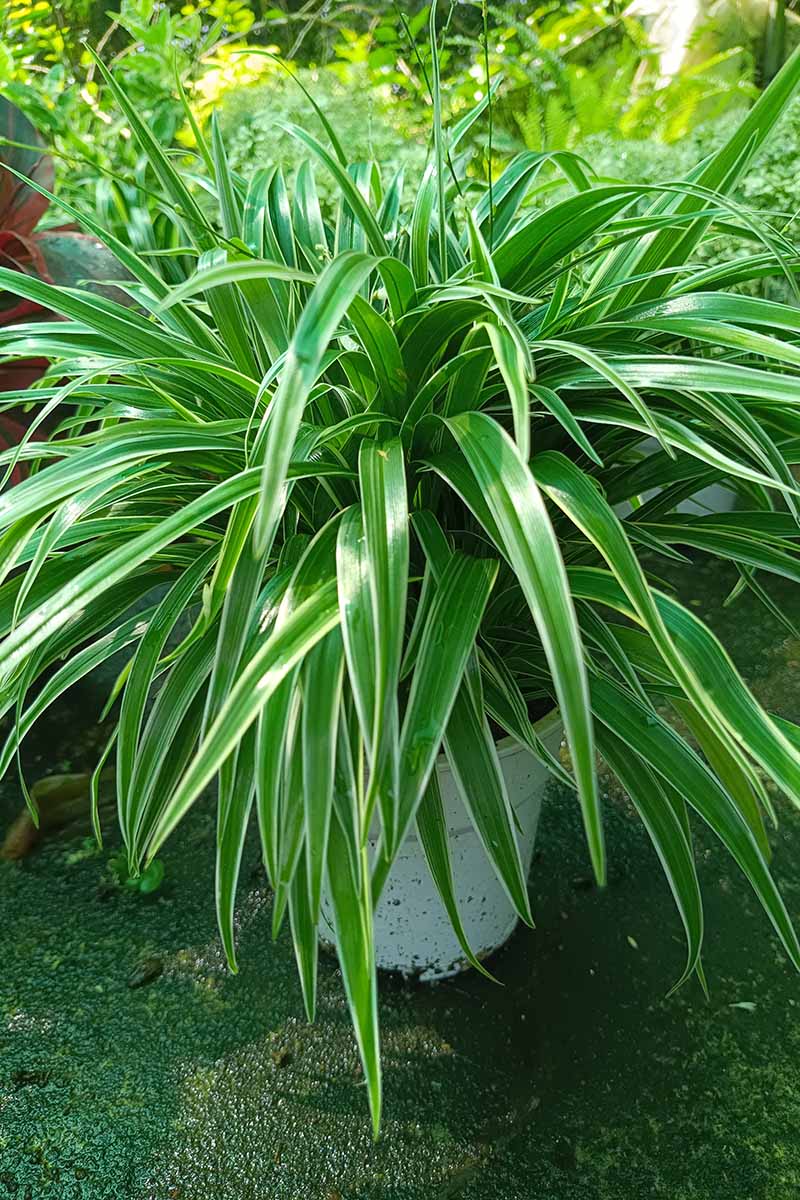
They can certainly benefit from a modest amount of food during the growing season, but they’ll languish quickly if you feed them too much or too often.
The macronutrients nitrogen, phosphorus, and potassium in fertilizer provide the necessary nutrients for the plant to produce healthy leaves and strong roots.
The drawback is that a build up of fertilizer in the potting soil can cause salt deposits that will burn roots and turn leaves brown. If a specimen is already languishing, applying fertilizer can hasten its death.
Now let’s look at the timing that will spell success or failure.
When to Fertilize
First, let’s discuss what you shouldn’t do!
Don’t feed your C. comosum for the first four months after you acquire it from a nursery, store, or online vendor.
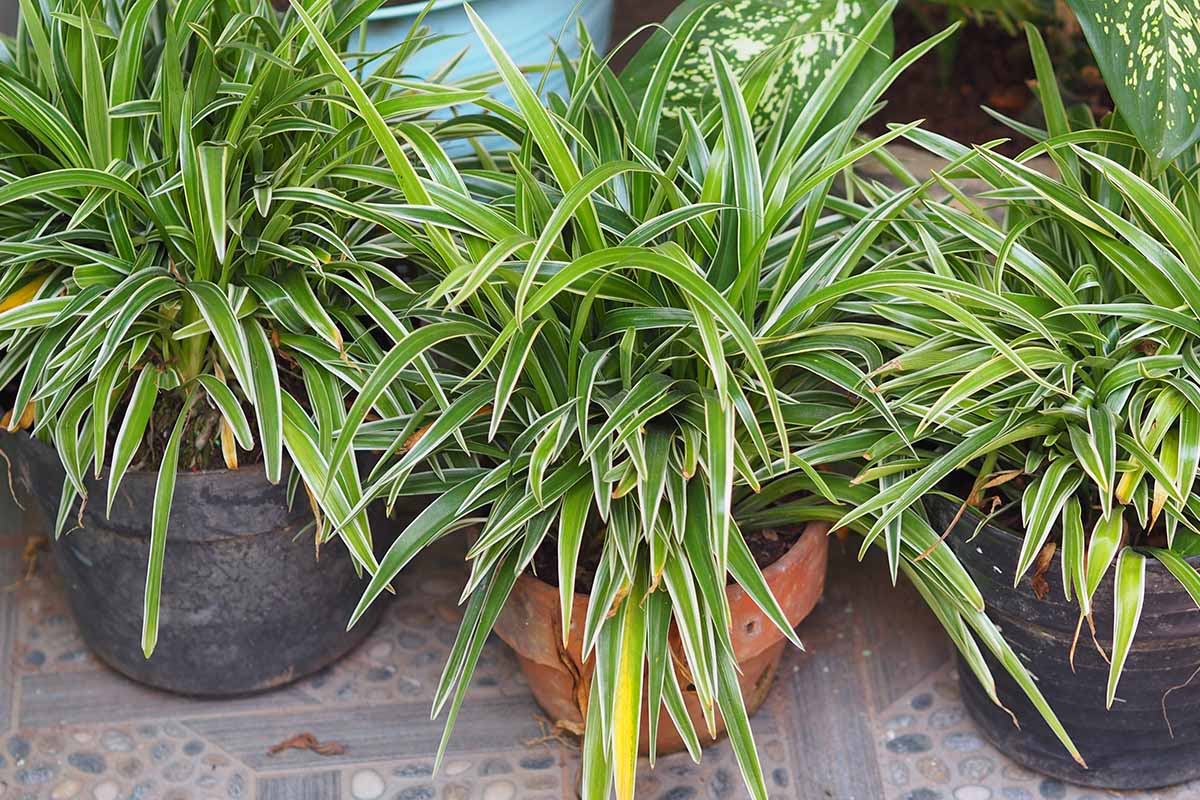
The C. comosum has most likely already received a dose of fertilizer from the grower, perhaps in the form of a time-release spike or an application of slow-release granules.
Also, and I realize this is counterintuitive, never feed a houseplant that is already languishing and looking sickly. It’s too hard on the roots.
Nor should you apply fertilizer once a C. comosum stops actively growing leaves. The parent plants usually start sending out offshoots that bloom and then form baby spiderettes in autumn, even when they are grown indoors.
At that time, extra nutrition will promote the growth of more foliage, not baby plantlets.
When your spider ivy is thriving, apply a balanced, all-purpose indoor plant food once a month during the growing season.
If you live in an area with fluoridated tap water, consider mixing the fertilizer with distilled or rainwater instead.
You’ll ordinarily get the best results without risking root burn or brown leaf tips by mixing water-soluble food at half the strength recommended by the manufacturer.
If you live in a warm area and the spider plants are outside where they require supplemental water in summer, only add water-soluble food once every few times you water.
Alternatively, you can apply a slow-release fertilizer in the form of granules or plant food spikes.
Schedule your application of slow-release products so they’ll be done releasing fertilizer into the potting mix before late autumn or early winter at the latest.
How to Fertilize
Thankfully, it’s simple to apply fertilizer properly once you’ve got the schedule down.
You will need to apply the product at the surface of the soil without spraying it on to the leaves.
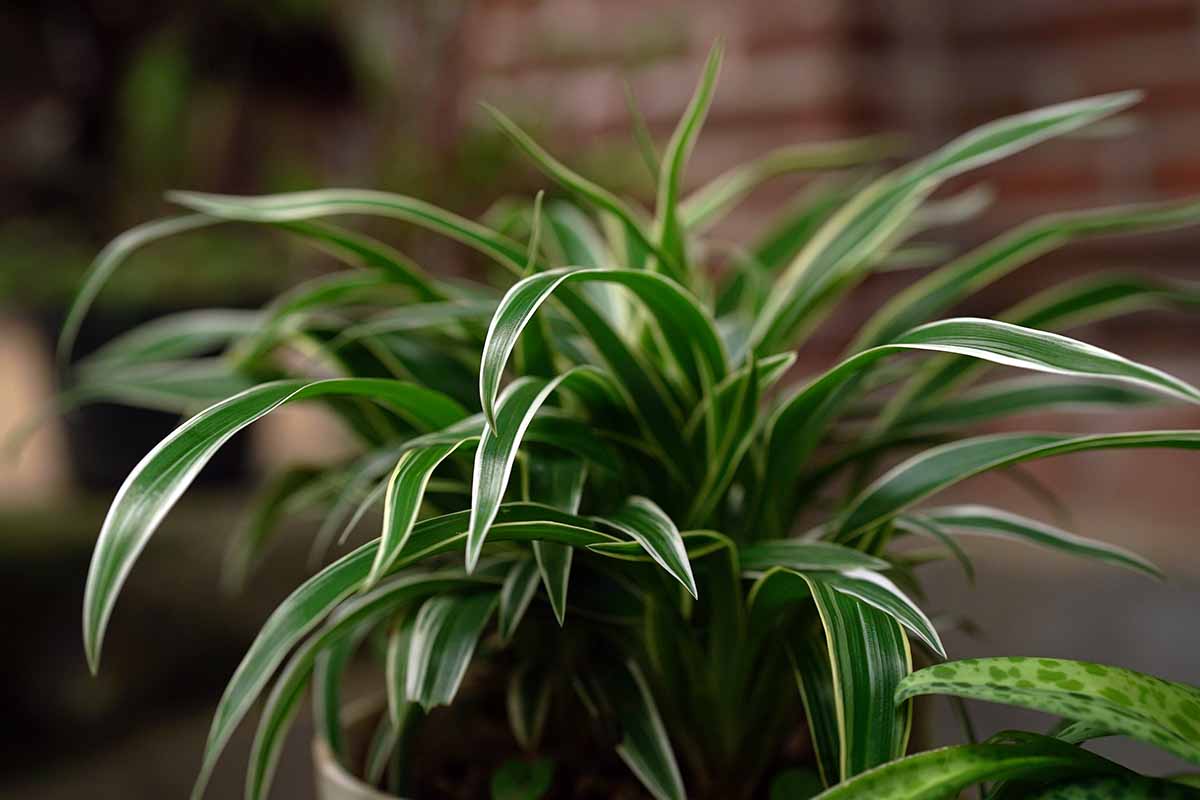
If you consistently wet the foliage, the fertilizer can burn it and the moisture may also promote fungal diseases like powdery mildew.
Allow time for the water to soak all the way through the soil and drain out of the holes at the bottom of the pot. Discard any excess from the saucer beneath.
Remember, spider plants don’t like wet feet, and root rot could result from pooled water in the pot or saucer beneath it.
If you are using slow-release granules or plant spikes, follow the manufacturer’s recommendation for application.
But if the directions on the package recommend year-round applications of slow-release products, tweak the process so you’re only fertilizing when the specimen is actively growing leaves.
Suggested Products
In years past, there was not a fertilizer specifically formulated for spider plants.
Now there is, and I like its results, but there are also solid options among non-specific all-purpose houseplant foods as well.
Here are three reliable options:
Gardenera Liquid Fertilizer
This is a rarity, a fertilizer formulated specifically for spider plants. Made by Gardenera, this product has an NPK ratio of 3-2-1 NPK and is organic.
It’s intended to promote foliage and strengthen the root system, and can it be used on recently rooted spiderettes as well as mature, full-sized specimens.
The manufacturer recommends mixing it with the water every second time you offer supplemental water during the active growth seasons.
Find Gardenera Liquid Fertilizer in eight- or 32-ounce bottles from Amazon.
The Grow Co Indoor Plant Food
The Grow Co 18-6-8 (NPK) time-release granules are one of the most affordable options.
Granules like these work best for containers that spend the summer or all year outside.
If you use them, you won’t have to water to add fertilizer when it has already rained. With the way C. comosum reacts to overwatering, that’s an important feature.
Because you apply this product once and they can last for six to nine months, only use it starting in early spring, so the granules won’t continue to release nutrients during the inactive winter months.
The Grow Co Indoor Plant Food is available in five-ounce bags via Amazon.
Houseplant Resource Center All-Purpose Plant Food
One option I rely on is Houseplant Resource Center water-soluble, organic, all purpose indoor plant food.
It’s organic, with a NPK ratio of 3-1-2 and also includes slow-release calcium.
This product is a gentle choice for species that are prone to root burn since it contains no urea.
The manufacturer recommends it as a year-round additive each time you water, but it doesn’t specifically list C. comosum among the houseplants on the label, so I would only use it during their spring and summer active growth seasons – not during the fall or winter months.
Houseplant Resource Center All-Purpose Food
You can find Houseplant Resource Center Indoor Plant Food in eight-ounce bottles via Amazon.
Overfertilizing
I hate to nag, but seriously, if you’re the type to over-nurture your houseplants to their ultimate demise, you must be extra careful when feeding your C. comosum.
A few symptoms of the spider plants receiving too much fertilizer include brown leaf tips and a reluctance to produce spiderettes even though the leaves may look healthy.
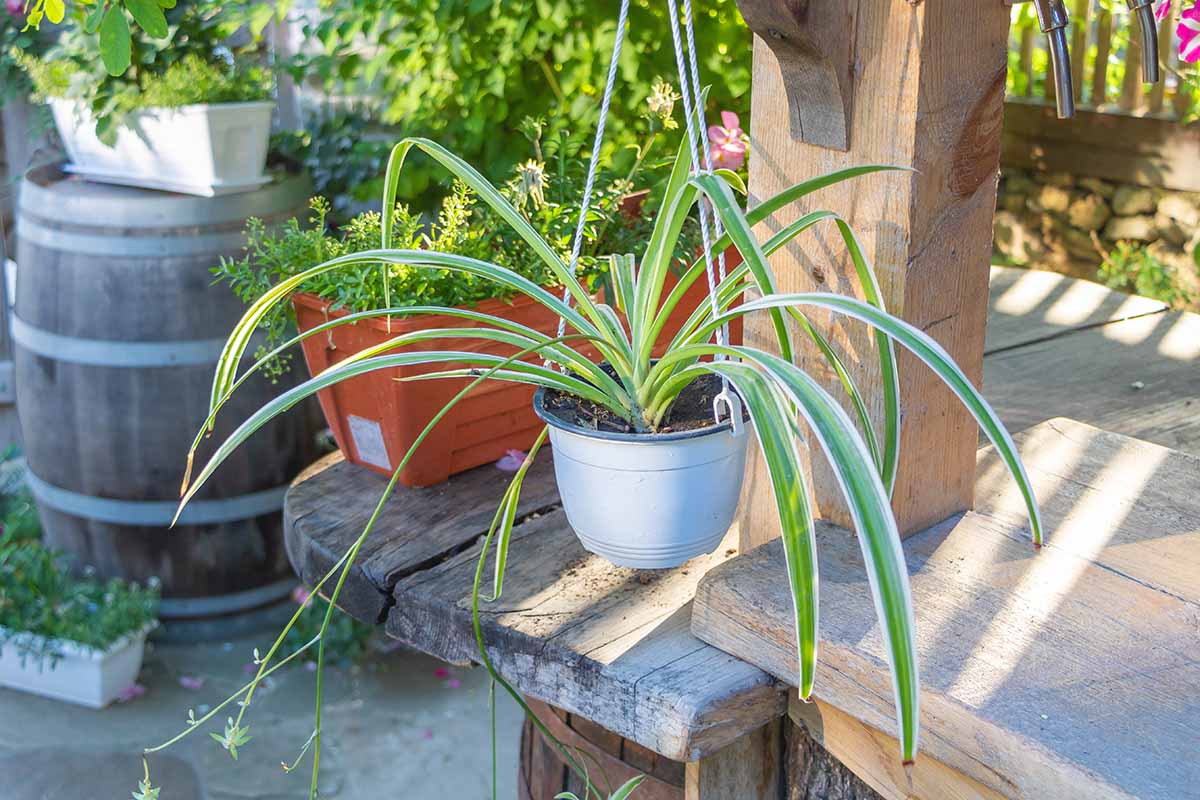
A buildup of salts from fertilizing, even when done properly, can also cause root burn that can kill the roots and invite disease.
If you see a white salty coating on the outside of terra cotta pots, or a thin film in a ring around the inner rim of the pot, you may be overfertilizing.
While the film doesn’t necessarily mean you’re providing too much fertilizer, it does indicate that you shouldn’t proceed without some changes.
You may be able to solve the issue by flushing the buildup of salts from the soil with several deep waterings, allowing each to drain all the way through and discarding the extra.
Or you may need to replace the dirt or at least add fresh, unfertilized potting mix to the top couple of inches in the pot.
Then keep your favorite leafy arachnid healthy and vibrant with just the right amount of food.
A Spidey Sense for Houseplant Food
All houseplants will do better if you keep a watchful eye on them – as long as your observations don’t lead to you overdoing water or fertilizer.

If you monitor your spider plants for signs they’re getting enough or too much food, you’ll soon develop a sense of what they need and what they can do without.
It’s all part of the houseplant parent routine.
Do you have experience with, or questions about, fertilizing? Feel free to drop down and add a comment in the section below.
And if this coverage suits your taste, turn to these spider plant guides next:



